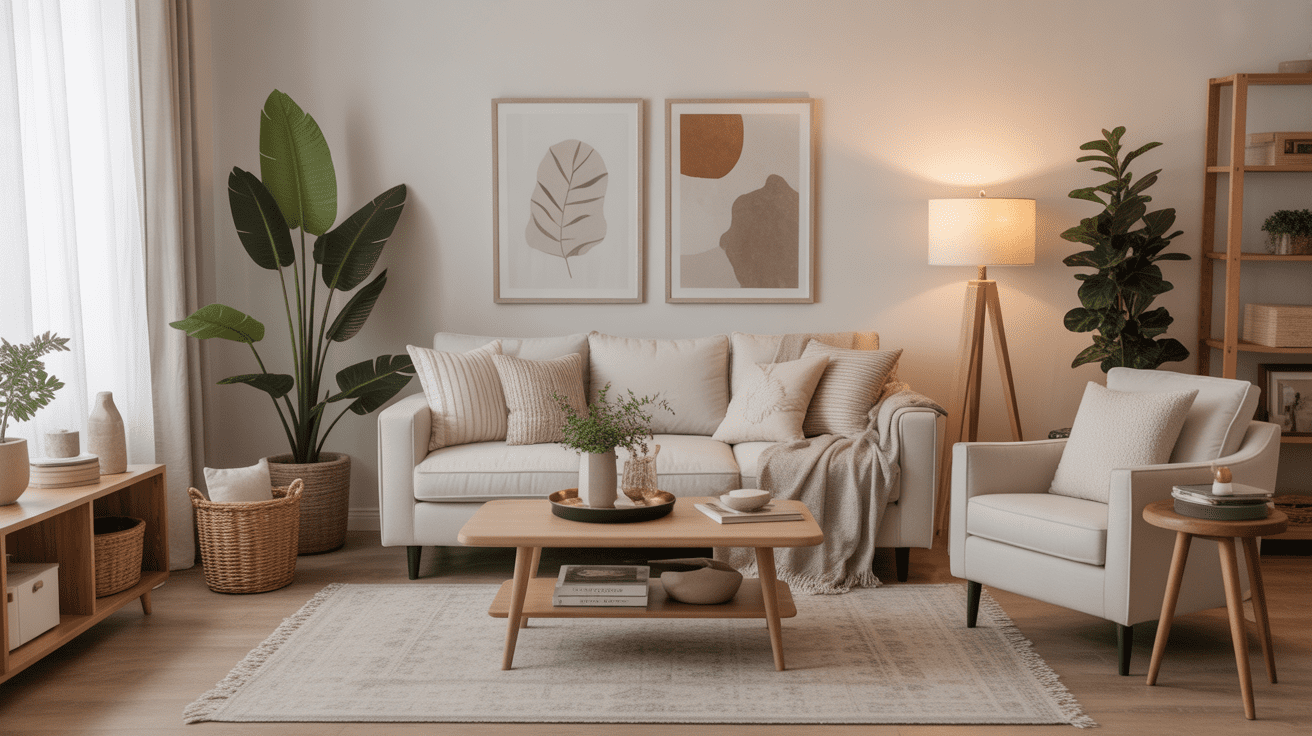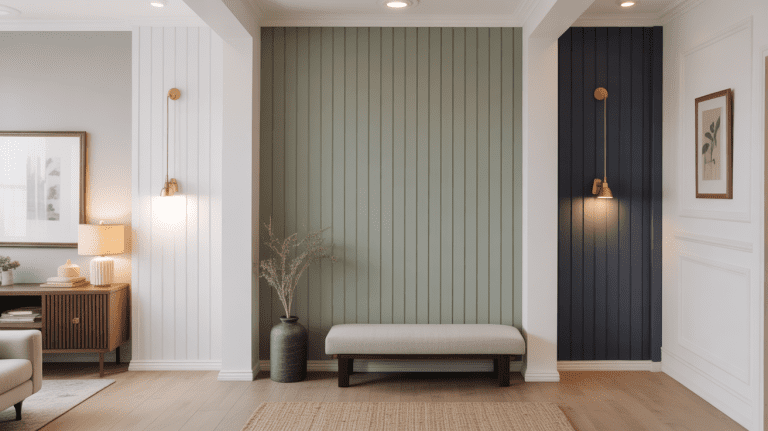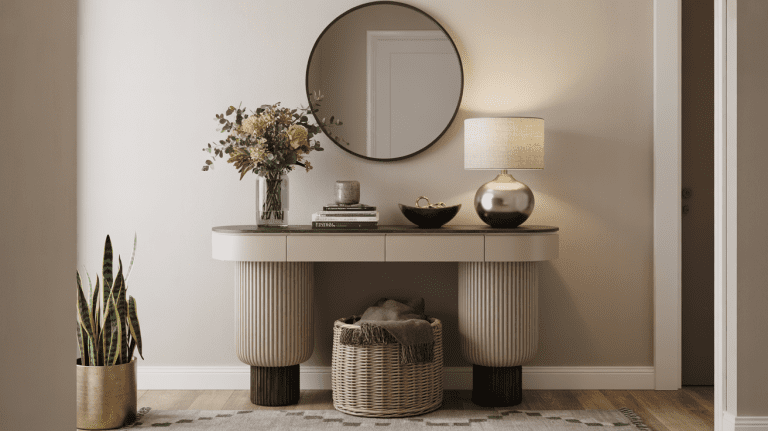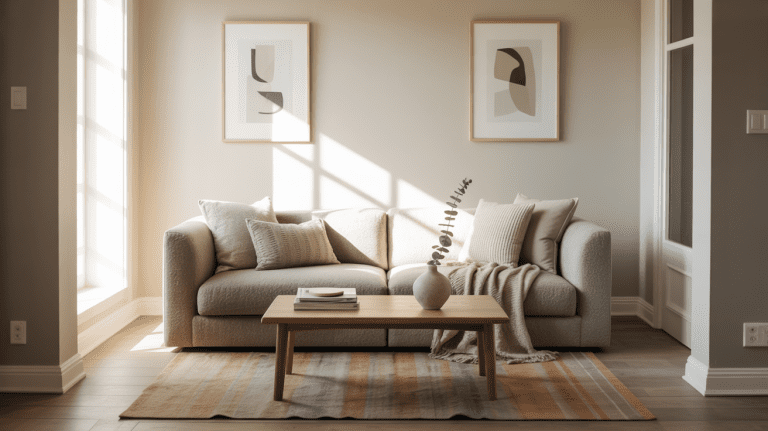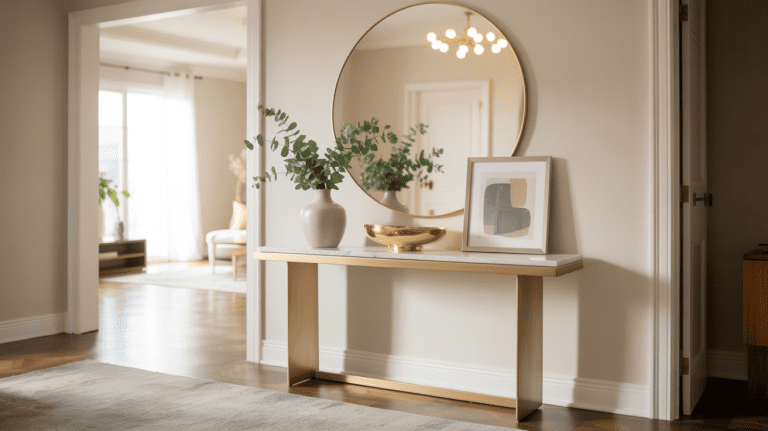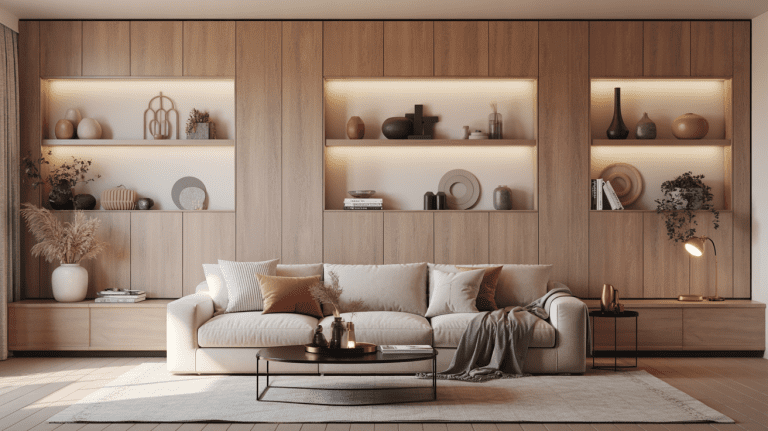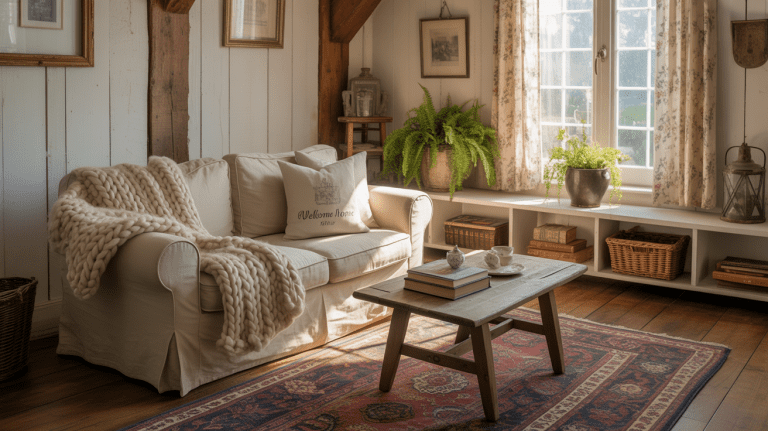Is Your Living Room Decor Secretly Stealing Space?

Your living room feels like it’s shrinking and you can’t figure out why. Trust me, it’s not your imagination. That oversized sectional and those decorative “must-haves” are actually space vampires, sucking away precious square footage while offering minimal function.
I see this all the time in small space interior design consultations—people unknowingly sabotaging their rooms with poor furniture choices and placement.
Here’s the deal: in the next five minutes, I’ll show you exactly which decor elements are making your living room feel cramped and what to replace them with instead.
The worst offenders might surprise you, especially #3—it’s in practically every living room in America, and interior designers are begging you to reconsider it.
Space-Stealing Furniture Mistakes
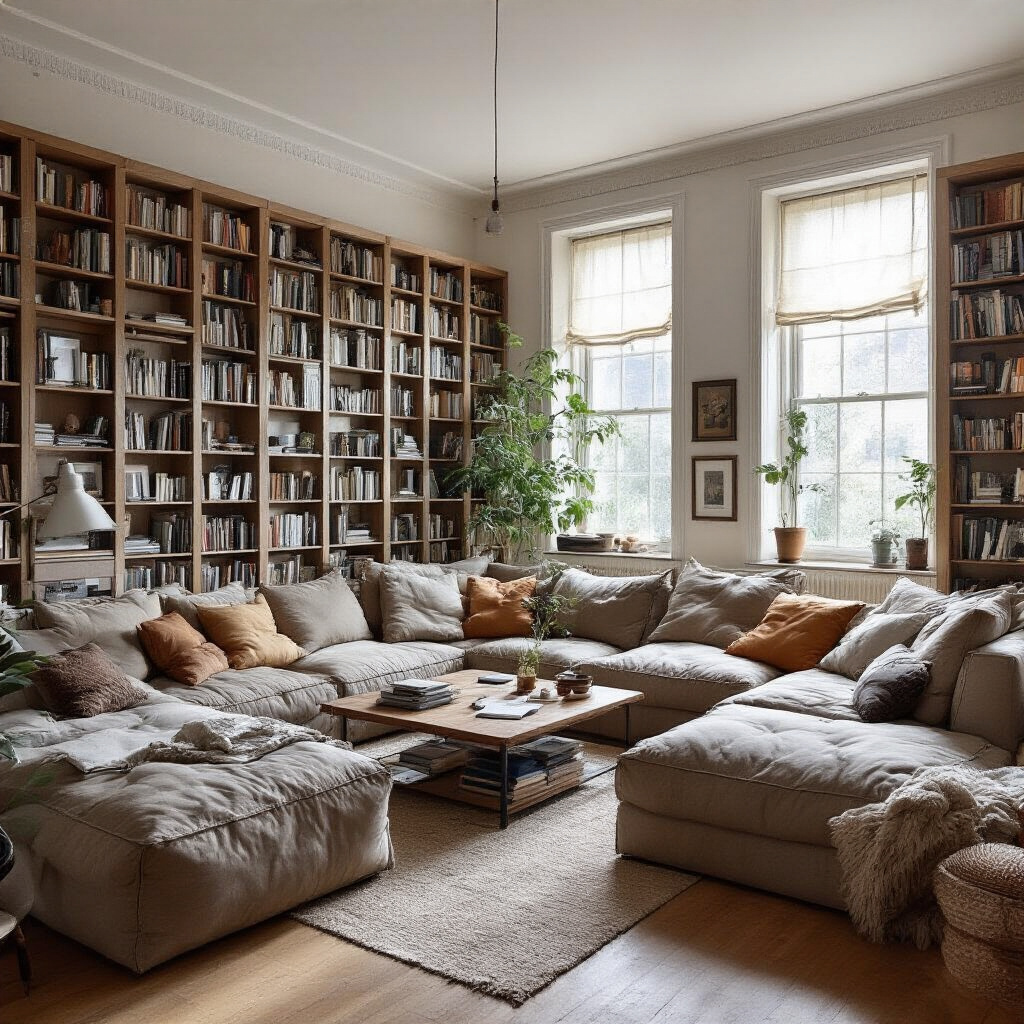
Oversized Sofas: The Living Room Space Hogs
That massive sectional you fell in love with? It’s eating half your living room. When your sofa forces everyone to squeeze past or creates a cramped pathway, it’s time to downsize. Nobody needs seating for twelve in an apartment built for four.
When Coffee Tables Become Obstacles
Coffee tables should complement your space, not dominate it. Those oversized square behemoths might look stunning in showrooms but turn your living room into an obstacle course. A slim, properly scaled table keeps pathways clear while still holding your essentials.
Bulky Entertainment Centers: Yesterday’s Storage Solutions
Those wall-spanning entertainment units from the 90s are space vampires. Modern TVs don’t need massive cabinets. Wall-mounting your screen and choosing floating shelves instead frees up valuable floor space and creates visual breathing room.
Too Many Side Tables and Accent Pieces
Your collection of cute side tables, poufs, and accent chairs might be suffocating your space. Each piece claims precious square footage. Be ruthless—if it doesn’t serve a daily purpose or bring genuine joy, it’s just clutter with decorative pretensions.
Wall Decor That Visually Shrinks Your Space
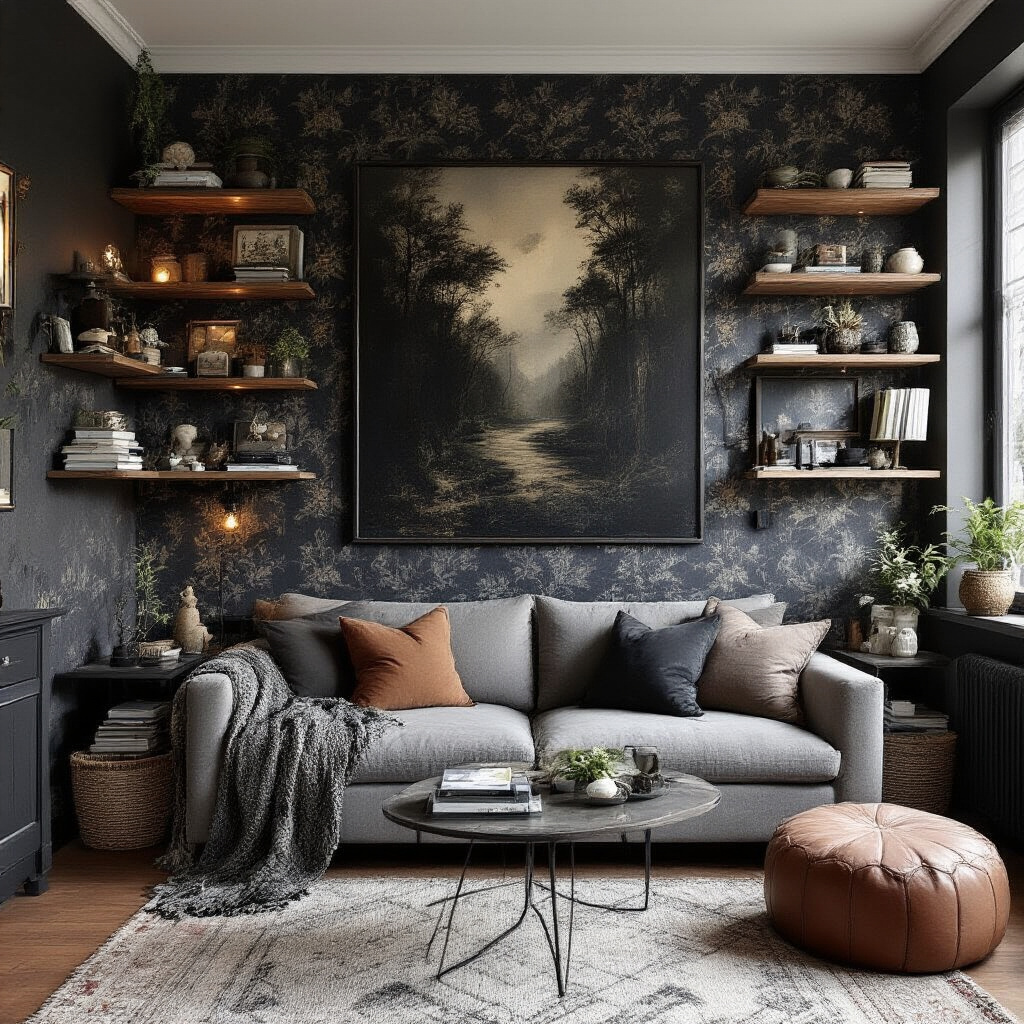
A. Dark Paint Colors and Their Spatial Impact
Think those moody charcoal walls look sophisticated? They might be eating your square footage. Dark colors absorb light instead of reflecting it, making walls appear to close in on you. That gorgeous navy blue accent wall could be the reason your living room feels like a shoebox.
B. Cluttered Gallery Walls: Less Can Be More
Your wall of family photos, artwork, and random Target finds isn’t just overwhelming visitors—it’s suffocating your space. When every inch of wall screams for attention, your room feels smaller and chaotic. Curate ruthlessly. Three perfect pieces beat twenty mediocre ones every time.
C. Heavy Window Treatments Blocking Natural Light
Those thick, floor-length curtains might keep neighbors from peeking in, but they’re also imprisoning your living room in shadows. Bulky window treatments that block natural light make spaces feel confined and gloomy. Your drapes could be the sneakiest space-stealers of all.
Layout Problems That Waste Valuable Square Footage
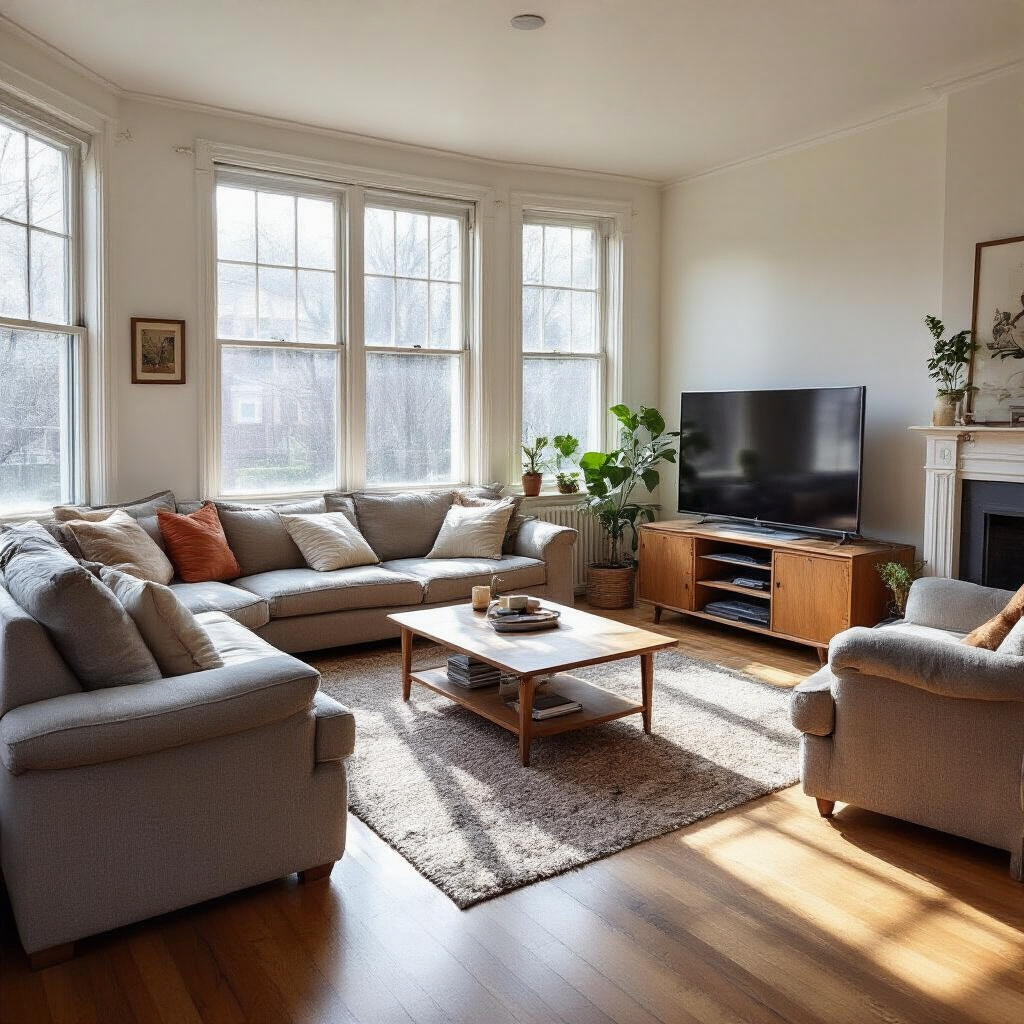
Poor Traffic Flow: Creating Unnecessary Pathways
Ever notice how you zigzag around your coffee table to reach the sofa? That’s wasted space. When furniture creates awkward pathways, you’re basically installing invisible hallways in your living room. Rearrange pieces to create straight, logical paths and you’ll instantly reclaim square footage.
Pushing Furniture Against Walls (And Why It Backfires)
Shoving everything against walls doesn’t maximize space—it creates a weird empty island in the middle and makes conversation awkward. Try floating furniture in conversational groupings instead. This counterintuitive move actually makes rooms feel larger and more purposeful.
Ignoring Corner Spaces
Those corners aren’t just for collecting dust! They’re prime real estate you’re paying for monthly. A corner shelf, angled entertainment center, or reading nook transforms dead zones into functional areas. Corner furniture is literally designed for this purpose.
Improper Rug Placement and Sizing
That postage-stamp rug floating sadly in your space? It’s chopping up your floor visually and making everything feel disconnected. A properly sized rug that accommodates all furniture legs creates visual continuity and makes rooms feel substantially larger.
Blocking Natural Light Sources
Furniture blocking windows isn’t just depressing—it’s shrinking your space. Natural light is a room-expander that costs nothing. Pull bulky pieces away from windows and watch your room visually grow. Bonus: you’ll save on electricity too.
Storage Solutions That Are Making Things Worse
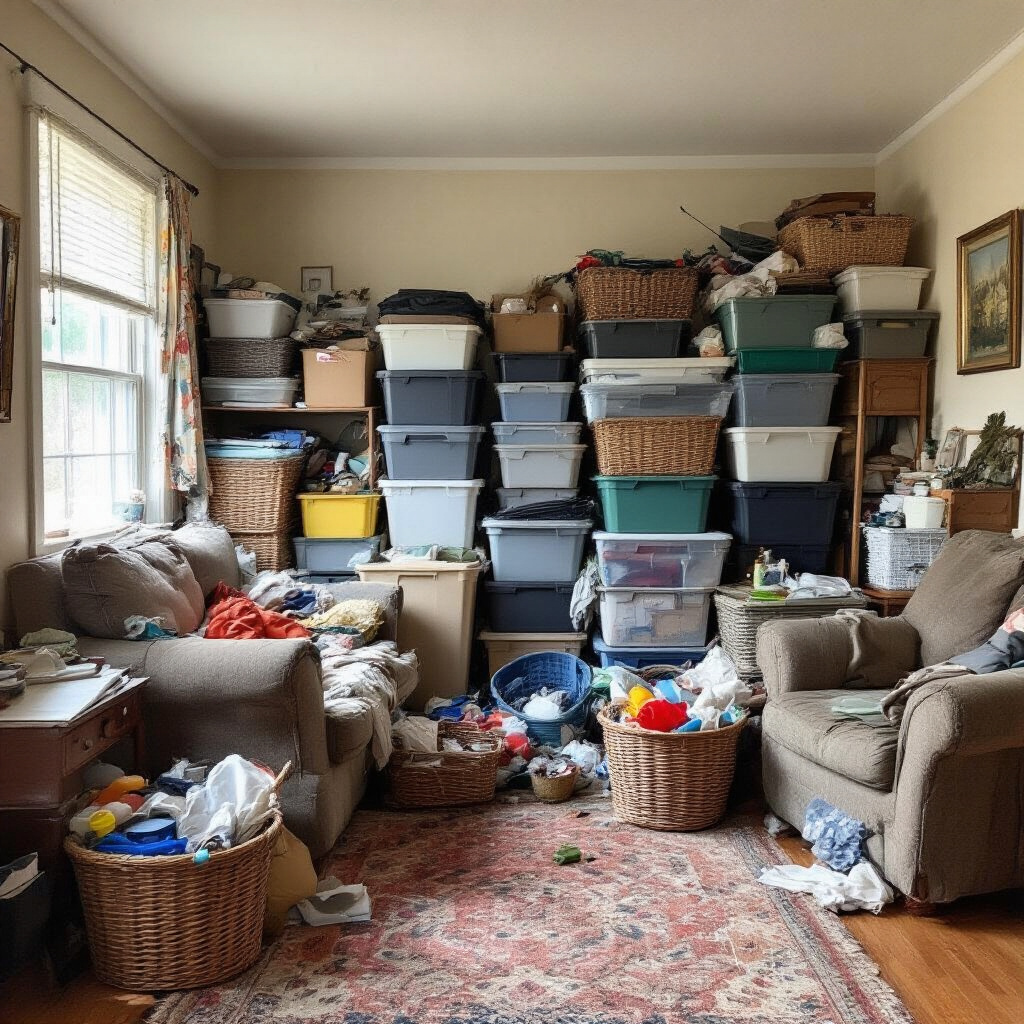
A. Visible Clutter: The Ultimate Space Stealer
Those knick-knacks and decorative items scattered everywhere? They’re eating up your living room’s breathing room. Every random magazine stack, exposed cable, and unused remote control tricks your brain into seeing a smaller space. The mess isn’t just annoying—it’s literally shrinking your room before your eyes.
B. Ineffective Bookshelf Arrangements
Your bookshelves might be working against you. Cramming every inch with books and random objects creates visual heaviness. That chaotic arrangement where nothing has a purpose? It’s making your walls feel like they’re closing in. Rethink those shelves—they should open up space, not consume it.
C. Underutilized Vertical Space
Look up! That neglected area above eye level is prime real estate you’re ignoring. Most people focus storage solutions at waist height, creating a middle-heavy room that feels cramped. Meanwhile, those bare upper walls could be holding everything from books to decorative bins, drawing eyes upward and making the ceiling feel higher.
Optical Illusions to Reclaim Your Living Room
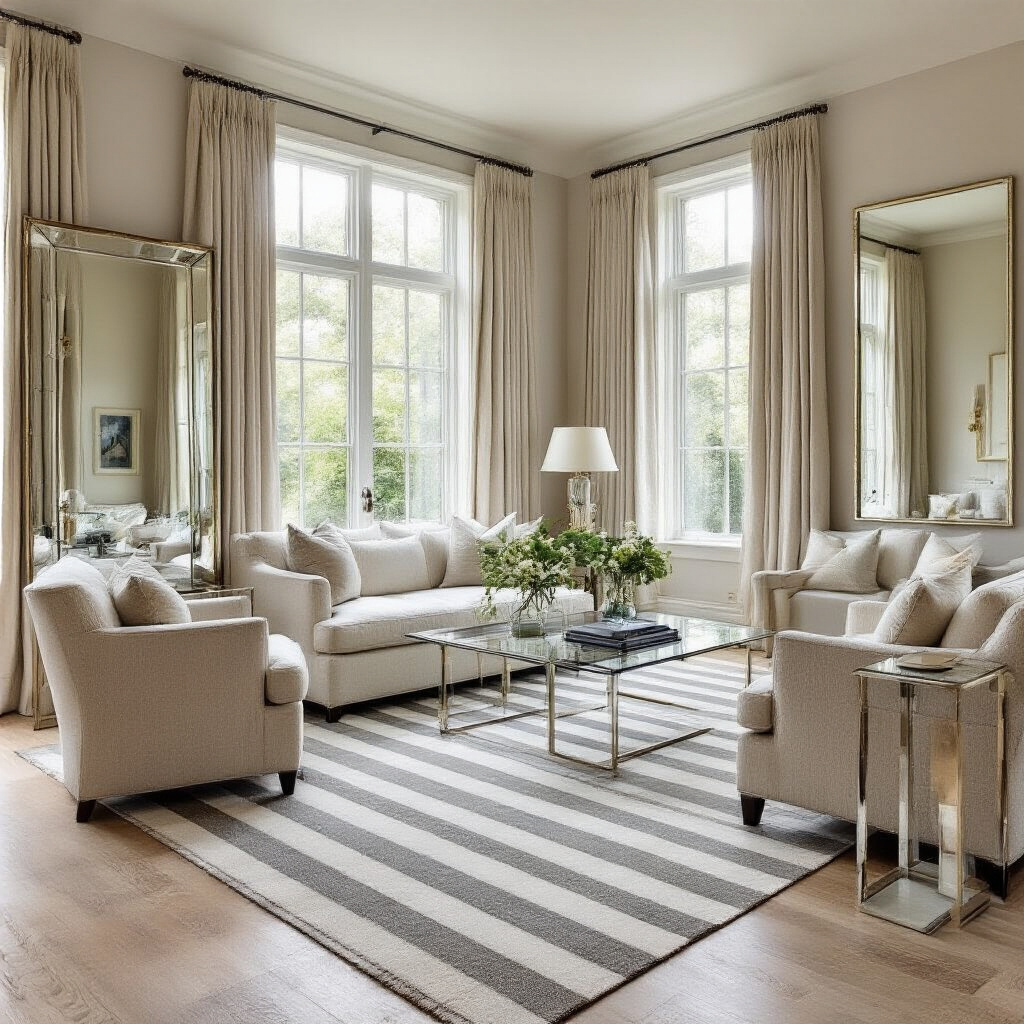
Strategic Mirror Placement for Spatial Expansion
Mirrors aren’t just for checking your outfit. Place one opposite a window and watch your room double in size instantly. That dark corner that’s been bugging you? A mirror there bounces light around, making the whole space feel airier. Trust me, it’s the oldest designer trick for a reason.
Light-Enhancing Color Schemes
Ever noticed how dark colors make rooms feel like caves? Swap those moody blues for soft neutrals or cool pastels. Light colors reflect more light, pushing your walls outward visually. Add white trim and suddenly your ceilings seem higher too. Paint is cheap, but the breathing room it creates? Priceless.
Furniture with Exposed Legs: Creating Visual Space
Ditch those boxy sofas sitting flush on the floor. Furniture with visible legs lets your eye travel underneath, creating breathing room where there was none. This simple switch makes floors appear larger and rooms feel less cluttered. Your space isn’t actually bigger, but your brain totally falls for it.
Multi-Functional Pieces That Save Space
That coffee table with hidden storage? Game changer. Ottomans that serve as extra seating? Brilliant. When every piece in your room pulls double duty, you need fewer things overall. The result? A living room that actually has space for, you know, living. No more furniture obstacle course.
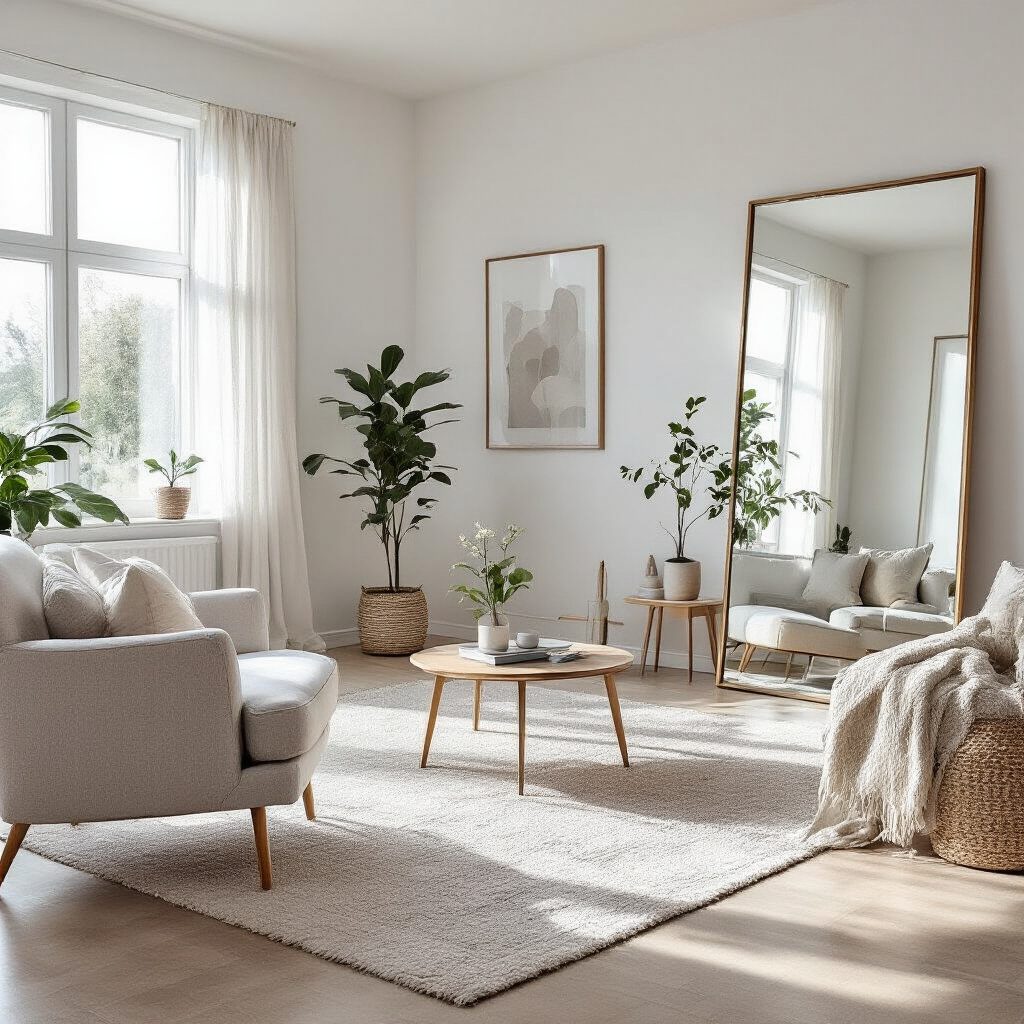
A cluttered, poorly designed living room doesn’t just look chaotic—it actively works against you by making your space feel smaller than it truly is. From oversized furniture that dominates the room to ineffective storage solutions that create more problems than they solve, these common decorating missteps can significantly diminish your living area’s functionality and visual appeal.
The good news is that reclaiming your space doesn’t necessarily require a complete renovation. By being mindful of wall decor choices, rethinking your layout strategy, and implementing optical illusions through strategic color schemes and mirror placement, you can transform your cramped living room into an open, inviting space that feels significantly larger. Take a fresh look at your living room today—your home’s hidden square footage is just waiting to be discovered.

